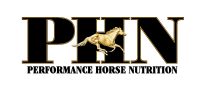RESEARCH UPDATE
GASTRIC ULCERS IN HORSES
2005

Written by Performance Horse Nutrition
Gastric Ulcers are a significant problem in many types of performance horses. It had been reported that 93% of racehorses have gastric ulcers, while nearly 60% of nonracing performance horsed have ulcers.
The cause of gastric ulcers is stomach acid eroding the lining on the stomach. Why do performance horsed get gastric ulcers? One of the main theories revolves around diet. When a horse begins its racing or performance career the horse gradually consumes less and less hay while the intake of grain increases. When a horse chews an equal weight of hay versus grain, twice as much saliva will be produced when the horse consumes hay. One of the main buffers for stomach acid is saliva. Therefore as performance horses consume more grain and less hay, the potential for ulcer development increases. This theory gets stronger when you consider that horses with free-access to good quality pasture rarely get ulcers. A recent study looked at the incidence of gastric ulcers in 80 horsed housed a the University of Connecticut. These horses were between 2 and 23 years of age and represented Morgan, Thoroughbred, Quarter Horse, and grade animals. An 11% incidence of gastric ulcers was are reported in this group of non-show horses. The incidence of ulcers was highest for horses 8 t0 17 years of age. Finally, this study reported that mares were more likely to get ulcers compared with geldings and breed did not seem to influence the incidence of ulcers.
Reference: K:Chameroy et al., 2005
Effect of age, gender, breed and use on occurrence of gastric ulcers in horses. 19th
Equine Science Society Symposium, p. 215
Share on print
Print

